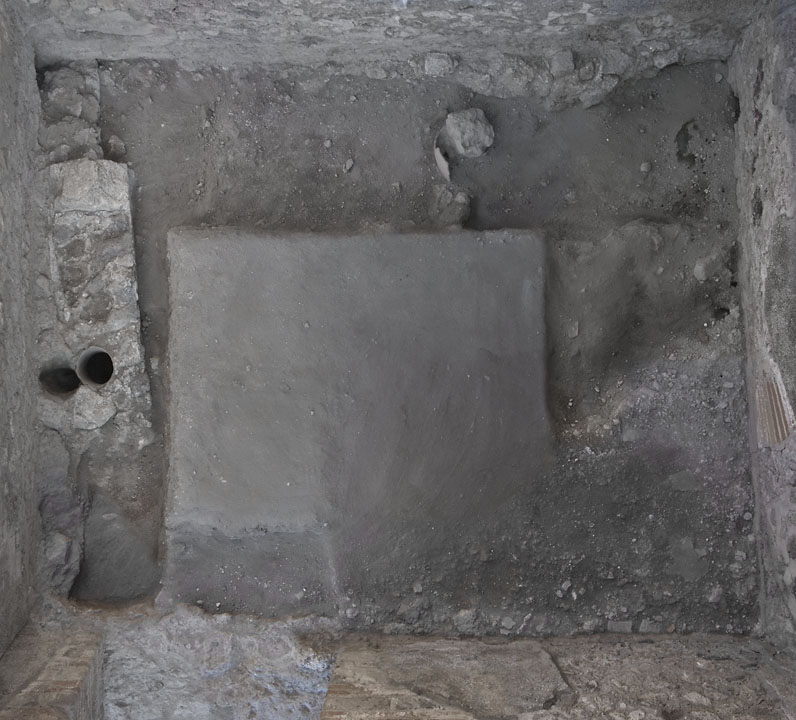Floor
Description
Henrik Boman
During 2011 the floor was cleared from the small lava gravel, though no floor paving was found at any location in the room. In the NE corner, the search for a conduit from V 1,12 was conducted, though soft earth mixed with large amounts of volcanic fine ash covered the area, no traces of any conduit, not foundation for the E wall was found.
The clearing ofh te top surface was conducted all around the walls. In the SE corner, a fairly leveled area with mid size pieced of mixed building debris (stones, mortar, plaster, floor fragments, terracotta) was found. First identified the preparation layer for a floor, we reinterpreted the layer as building debris still in situ, presumably an eruption context.
Along the W wall, a layer of earth mortar was found c. 20 cm below the modern floor. The mortar was removed and beneath it an earlier wall was discovered. Cut down to a level estimated to be c. 30 cm below the level of the threshold to room 6.
Facing west, a sloth plaster surface was visible inside the wall, indication the western part of the structure as it appears today is a later addition to an existing wall — presumably to function as foundation fort the wall that stands above floor level today.
Built in large lime stone, with abundant amounts of mortar still in situ, partly concealing the stones used in the wall.
A terracotta pipe is maisoned into the wall, thin wall, c. 0.2 m in diam, with a hollowed out cavity in the added wall to the west corresponding to this pipe. Only one single terracotta pipe was possible to see; it was filled with earth mortar and it was not possible to identify any continuation or extension of the pipe.

